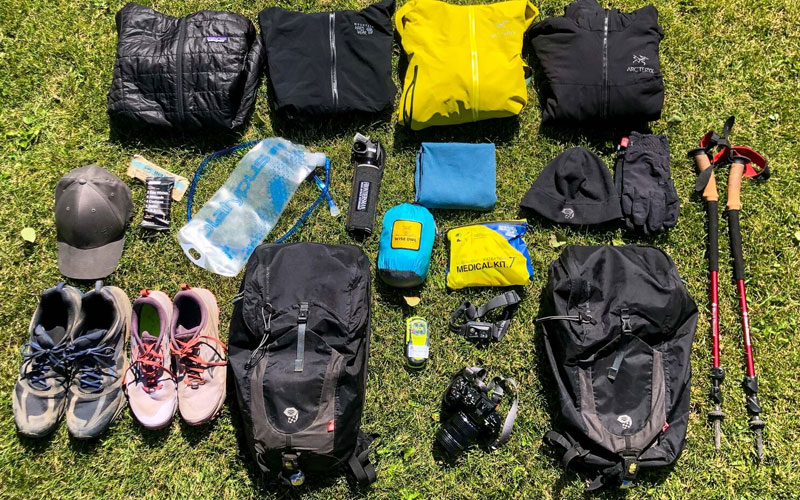Kilimanjaro Trekking Gears How Much Does It Cost?
When comes How Much Does Cost for preparing for a Kilimanjaro trekking adventure, having the right gears is essential to ensure your comfort, safety, and enjoyment throughout the journey. While the cost of Kilimanjaro trekking gear can vary and Cost up from $1000 depending on various factors such as brand, quality, and where you purchase it. But it’s possible some of Gears can be hire for a cheap price, so its Better to ask the Tour operators before to purchase it.
When it comes to trekking Mount Kilimanjaro, having the right gear is crucial for a safe and enjoyable experience.
Here’s a list of essential gear you should consider when preparing for a Kilimanjaro trek:
Clothing:
Moisture-wicking base layers: Choose synthetic or merino wool base layers to help regulate your body temperature and keep you dry. Insulating layers: Fleece jackets or down jackets are great for providing warmth in colder conditions.
Waterproof and windproof outer shell: Look for a quality waterproof and windproof jacket and pants to protect you from rain and strong winds.
Trekking pants:
Lightweight, quick-drying pants with zip-off legs are versatile and ideal for varying weather conditions.
Trekking shirts: Pack a few moisture-wicking shirts for the trek.
Undergarments and socks: Carry moisture-wicking underwear and thick hiking socks to prevent blisters.
Footwear: Hiking boots: Invest in sturdy, waterproof hiking boots with ankle support for rocky and uneven terrain.
Sock liners: Wear thin sock liners beneath your hiking socks to minimize friction and reduce the risk of blisters.
Gaiters: Consider gaiters to protect your boots and lower legs from debris and wet conditions.
Sleeping gear:
Sleeping bag: Choose a high-quality, warm, and lightweight sleeping bag suitable for cold temperatures.
Sleeping pad: A lightweight, insulated sleeping pad provides cushioning and insulation from the cold ground.
Backpack:
Trekking backpack: Look for a comfortable, durable backpack with a capacity of 2-5 Liters to carry your gear during the trek.
Daypack: Bring a small daypack for shorter hikes or summit attempts.
Headgear:
Wide-brimmed hat: Protect your face and neck from the sun’s rays.
Beanie or warm hat: Keep your head warm during colder parts of the trek.
Sunglasses: Choose sunglasses with UV protection to shield your eyes from the sun’s glare.
Accessories:
Trekking poles: Provide stability and reduce strain on your knees and legs.
Gloves: Bring lightweight gloves for lower elevations and thicker insulated gloves for higher altitudes.
Headlamp: Essential for early morning summit attempts or nighttime activities in camp.
Water bottles or hydration system: Stay hydrated by carrying reusable water bottles or a hydration bladder.
Snacks: Carry energy bars, nuts, and other lightweight snacks to keep your energy levels up.
Remember to pack lightweight, moisture-wicking, and breathable clothing. Layering is key to adapt to changing weather conditions as you ascend to higher altitudes. It’s also essential to pack in accordance with the specific requirements of your trek and the time of year you plan to climb Kilimanjaro.

